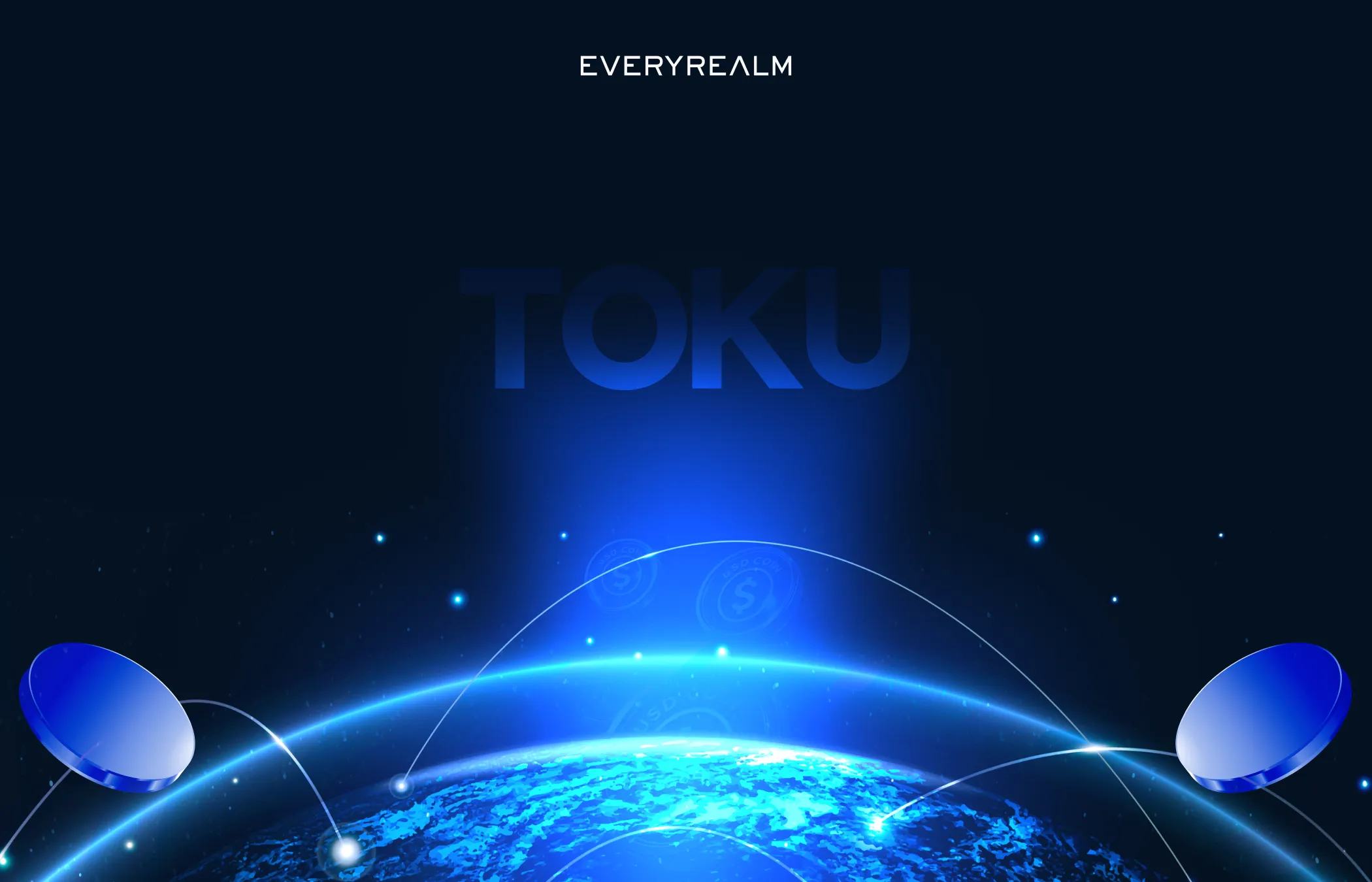
The Best Employee Benefits Stack for Web3
Discover how Web3 organizations can design employee benefits for global, decentralized teams. Learn key principles and best practices.
.avif)
.avif)
Web3 may still be considered the “new kid on the block,” but its impact on the way we work, build, and collaborate is already profound. From decentralized autonomous organizations (DAOs) to tokenized payrolls, the ecosystem is rewriting the rules of employment. In fact, the global Web3 market is projected to exceed $87 billion by 2030, a sign of just how deeply it will shape the future of work.
But with this rapid growth comes a new responsibility. Web3 founders and leaders are not only building innovative technologies—they’re also setting the cultural and structural standards for how contributors are treated in this emerging industry. One of the most critical areas where they can make a lasting difference is in employee benefits.
In traditional workplaces, benefits such as healthcare, pensions, and paid leave are often seen as a cost center. In Web3, they represent something much bigger: a chance to redefine fairness, inclusivity, and sustainability for a truly global workforce. Web3 is borderless, remote-first, and community-driven—and its benefits stack must reflect these values.
This article explores Toku’s vision for the future of the Web3 employee benefits stack, built around three principles that are essential to this space:
- Loved by the community: Benefits must reflect the values and needs of the contributors themselves.
- Tailored for fully remote & asynchronous teams: Flexibility and inclusivity should be baked in by design.
- Designed by decentralized teams, for decentralized teams: Benefits should evolve through governance and feedback, not be imposed from the top down.
By rethinking benefits around these principles, Web3 organizations can not only attract and retain top talent but also create a healthier, more equitable ecosystem that supports contributors in every aspect of their lives.
Loved by the Community
Community is the beating heart of Web3. Unlike traditional organizations, where benefits are often designed by HR and handed down, Web3 organizations have the opportunity to co-create benefits alongside their contributors. This not only improves morale but also builds trust, inclusivity, and shared responsibility.
An effective Web3 benefits stack should go beyond minimum legal requirements to cover well-being, financial stability, and long-term growth for contributors and their families. Below are the key areas every forward-thinking Web3 organization should consider.
Healthcare Access Without Borders
Healthcare is often tied to geography. In the United States, employer-sponsored health insurance is standard, while in other countries, public healthcare plays a larger role. For global Web3 teams, this creates an uneven playing field—contributors in one country may have robust coverage, while others may have none.
To fix this, Web3 organizations need to provide global healthcare access, regardless of an employee’s domicile. This includes:
- Comprehensive medical coverage across regions.
- Partnerships with international insurers to ensure consistent benefits.
- Access to telemedicine services for remote-first teams.
Toku already works with leading health insurers worldwide, allowing organizations to provide fair, reliable healthcare coverage across multiple countries—an essential foundation for a global workforce.
Mental Health and Wellbeing Support
The pace of Web3 is exhilarating, but it’s also fast, volatile, and stressful. Long hours, heavy workloads, and virtual-only interactions can take a toll on contributors’ mental health. Forward-thinking organizations recognize that mental health is not optional—it’s critical to sustainable productivity.
Best practices include:
- Preventive resources like stress management tools and mindfulness programs.
- Access to licensed mental health professionals, available online for global contributors.
- Regular wellness check-ins to replace the casual office interactions lost in remote setups.
At Toku, mental health support is both preventive and reactive: contributors receive everyday wellness tools but also have access to crisis specialists when needed. This dual approach ensures contributors feel supported at every stage of their journey.
Paid Time Off (PTO) Designed with Intention
Paid time off is a proven driver of retention and productivity. Studies show vacations can increase employee performance by up to 80%. But in Web3, where markets run 24/7 and contributors are often “always on,” the temptation to skip time off is even stronger.
Unlimited PTO policies, while popular in tech, have proven problematic. Research suggests employees with “unlimited” leave often take less time off due to lack of clarity or cultural pressure. Instead, Web3 organizations should:
- Set clear expectations around minimum time off.
- Enforce mandatory recharge periods to prevent burnout.
- Provide flexible leave structures that respect asynchronous workflows.
The key isn’t just offering PTO—it’s ensuring employees actually use it.
Family and Special Leave
Life happens. Illness, caregiving responsibilities, or personal emergencies shouldn’t force contributors to choose between their health and their job. A Web3 benefits stack should include:
- Parental leave for all parents, regardless of gender or location.
- Caregiver leave for those supporting family members.
- Special “Me Days” that allow contributors to take time off—no questions asked.
Flexible leave demonstrates trust, boosts morale, and helps set healthier boundaries between work and life in an industry that often blurs the two.
Exercise and Recreation Programs
Most Web3 jobs are sedentary, involving long hours at a computer. Without intentional intervention, contributors risk burnout, poor health, and lower productivity. Supporting physical well-being can include:
- Subsidized gym memberships or virtual fitness subscriptions.
- Encouraging movement breaks during the workday.
- Organizing team fitness challenges to promote engagement.
These initiatives not only improve individual health but also build a sense of camaraderie in distributed teams.
Risk Protection and Insurance
Web3 is high-growth but also high-risk. Contributors want assurance that if something goes wrong—whether layoffs, illness, or organizational collapse—they’ll have a safety net. Essential protections include:
- Life insurance for contributors and their families.
- Income protection in case of unexpected job loss.
- Disability coverage for long-term security.
Providing these safeguards signals that your organization values stability and contributor well-being, even in uncertain times.
Pension Contributions and Retirement Planning
Despite being young, the Web3 workforce is already thinking about retirement. A recent survey of DAO contributors found 71% are saving for retirement, higher than the general population. Yet most of this saving is self-directed, with little employer support.
Organizations should implement:
- Supplemental pension contributions to encourage long-term retention.
- Flexible programs that adapt to local retirement systems.
- Access to crypto or token-based retirement accounts where permitted by law.
Supporting contributors in planning for the future not only improves retention but also helps professionalize the Web3 ecosystem.
Employee Assistance Programs (EAPs)
Web3 contributors often lack access to the HR resources available in traditional companies. Employee Assistance Programs fill this gap by providing:
- Mentorship and career coaching.
- Support with conflict resolution and performance reviews.
- Guidance on equipment, benefits, and workplace issues.
This ensures contributors have somewhere to turn when challenges arise, keeping morale high and turnover low.
Continuous Education and Training
Knowledge-sharing in Web3 is fragmented, often siloed within micro-communities or Discord groups. To build a truly thriving ecosystem, organizations must invest in:
- Formal education programs tailored to crypto and blockchain.
- Upskilling opportunities for contributors who want to grow.
- Encouraging cross-project collaboration and knowledge exchange.
Toku is developing frameworks to break down knowledge silos and ensure contributors have access to the tools they need to keep learning. This benefits not just individuals but the ecosystem as a whole.
Tailored for Fully Remote & Asynchronous Teams
One of the defining characteristics of Web3 organizations is that they are remote-first and globally distributed. Contributors work across continents, time zones, and cultures, often with little or no physical office presence. This creates both opportunities and challenges when it comes to designing benefits.
To truly support contributors, Web3 employee benefits must be built for asynchronous collaboration, flexibility, and inclusivity. Below are the core elements that organizations should prioritize.
Real Flexible Working
Flexibility is often touted in job postings, but in many traditional companies it simply means being allowed to work from home a few days per week. For Web3, flexibility must mean much more:
- Outcome-driven work: Contributors are evaluated on results, not hours logged or “face time.”
- Autonomy of schedule: Contributors can choose when they are most productive, whether early morning, late night, or split shifts.
- Freedom of location: The ability to work from anywhere, without restrictions to one office or region.
A study by Adobe revealed that 51% of enterprise workers prefer complete flexibility—a demand that’s even stronger in Web3. By enabling true asynchronous work, organizations can attract a wider talent pool and avoid burnout from rigid schedules.
Clear Policies for Asynchronous Collaboration
Flexibility cannot come at the cost of efficiency. To avoid misalignment and missed deadlines, Web3 organizations need:
- Documented communication guidelines (e.g., when to use chat vs. async tools).
- Defined response time expectations across time zones.
- Shared knowledge repositories that reduce reliance on real-time meetings.
By making processes transparent and collaborative, contributors can work independently while still moving projects forward cohesively.
Home Office Allowance
In traditional office setups, companies provide desks, chairs, and equipment. In a decentralized environment, it’s critical to replicate this support by funding contributors’ home setups. This may include:
- Ergonomic chairs and desks to prevent long-term health issues.
- Technology stipends for laptops, headsets, and monitors.
- Reimbursement for internet and electricity costs.
Studies show employees are 47% more productive when working from home—but only if they have a well-equipped workspace. Offering a home office allowance signals to contributors that their comfort and productivity are valued.
Access to Co-Working Spaces
Even in a fully remote ecosystem, sometimes contributors crave variety and human interaction. Providing access to co-working space memberships can:
- Reduce feelings of isolation.
- Spark creativity with a change of environment.
- Offer networking opportunities with other professionals.
Allocating a stipend for co-working spaces allows contributors to recharge and feel more connected, while still maintaining the flexibility of remote work.
Internet & Connectivity Support
For globally distributed teams, reliable internet access isn’t guaranteed everywhere. Poor connectivity can affect productivity, collaboration, and contributor morale. Organizations should consider:
- Subsidizing high-speed internet costs.
- Offering mobile hotspots for remote regions.
- Providing backup solutions in case of outages.
This ensures contributors can stay connected and engaged, regardless of where they’re working from.
Wellness & Work-Life Balance for Remote Teams
Remote-first doesn’t automatically mean balance. In fact, many contributors working from home feel pressured to always be online. Web3 organizations should build safeguards to protect contributors from burnout by:
- Setting clear expectations around working hours.
- Encouraging use of PTO and “no-meeting days.”
- Offering access to virtual wellness programs like yoga, meditation, or fitness sessions.
By recognizing the unique pressures of asynchronous, global work, organizations can build benefits that prioritize not just productivity but also contributor well-being.
Designed by Decentralized Teams, for Decentralized Teams
Decentralization is the foundation of Web3. DAOs and blockchain-based organizations thrive on shared ownership, community governance, and transparent decision-making. Employee benefits should follow the same principles—not imposed top-down, but co-created with contributors.
By embedding governance, feedback, and adaptability into benefits design, Web3 organizations can ensure their offerings stay relevant and meaningful as the ecosystem evolves.
Community-Driven Decision Making
In DAOs, every member has a say in shaping the organization’s future. Benefits should be no different. Contributors should have the ability to:
- Vote on proposed benefits packages using governance tokens.
- Prioritize which perks matter most to their community.
- Suggest new benefits or improvements via transparent proposal systems.
This democratic approach ensures benefits reflect the actual needs of contributors rather than assumptions made by leadership.
Feedback Loops and Iteration
Benefits aren’t static—they must evolve as organizations and their contributors do. A strong Web3 benefits stack includes:
- Regular feedback surveys to gauge satisfaction.
- Public dashboards showing how benefits are used.
- Iterative revisions based on community input.
Just as protocols release upgrades to improve efficiency and security, benefits packages should undergo ongoing improvements driven by contributor feedback.
Income Tax & Compliance Support
For many contributors, compensation is a mix of tokens, fiat, stablecoins, NFTs, or equity. Navigating the tax implications across jurisdictions is one of the biggest pain points. Web3 organizations should provide:
- Automated tax calculation tools that integrate with payroll.
- Access to global tax advisors who understand crypto regulation.
- Clear documentation to help contributors report income correctly.
By offering compliance support, organizations protect contributors from regulatory pitfalls while strengthening their own credibility.
Transparency in Benefits Allocation
Decentralized teams value transparency. Benefits packages should be clearly communicated and accessible to all contributors, covering:
- Eligibility rules (who qualifies for what and when).
- Vesting or lockup conditions tied to token-based benefits.
- Comparative benchmarking against traditional companies.
Transparency eliminates confusion, builds trust, and reinforces the organization’s commitment to fairness.
Case Example: DAO Benefits in Action
Some DAOs already experiment with decentralized benefits models. For example:
- Community health stipends where members vote to allocate treasury funds toward healthcare or wellness benefits.
- Education grants awarded through proposal-based voting to contributors who want to pursue upskilling.
- Childcare subsidies funded from the DAO treasury as part of contributor well-being.
These initiatives illustrate how decentralized teams can design benefits that are not only functional but also aligned with shared values of equity and inclusion.
Build the Future of Work
Employee benefits in Web3 are more than just perks—they’re a chance to redefine work itself. By focusing on three principles—loved by the community, tailored for fully remote teams, and designed by decentralized governance—organizations can create benefits stacks that attract top talent, retain contributors, and foster sustainable growth.
Traditional benefits like healthcare, PTO, and pensions must be expanded to address the unique realities of Web3: borderless teams, token-based pay, and decentralized governance. When done right, benefits become a strategic advantage, helping Web3 organizations stand out in an increasingly competitive landscape.
👉 That’s why Toku is building the Web3 employee benefits stack of the future. From healthcare to token grant administration, Toku helps organizations stay compliant, support contributors, and scale globally—without sacrificing the principles that make Web3 unique.
Ready to design a benefits program that empowers your Web3 team? Get started with Toku today.






